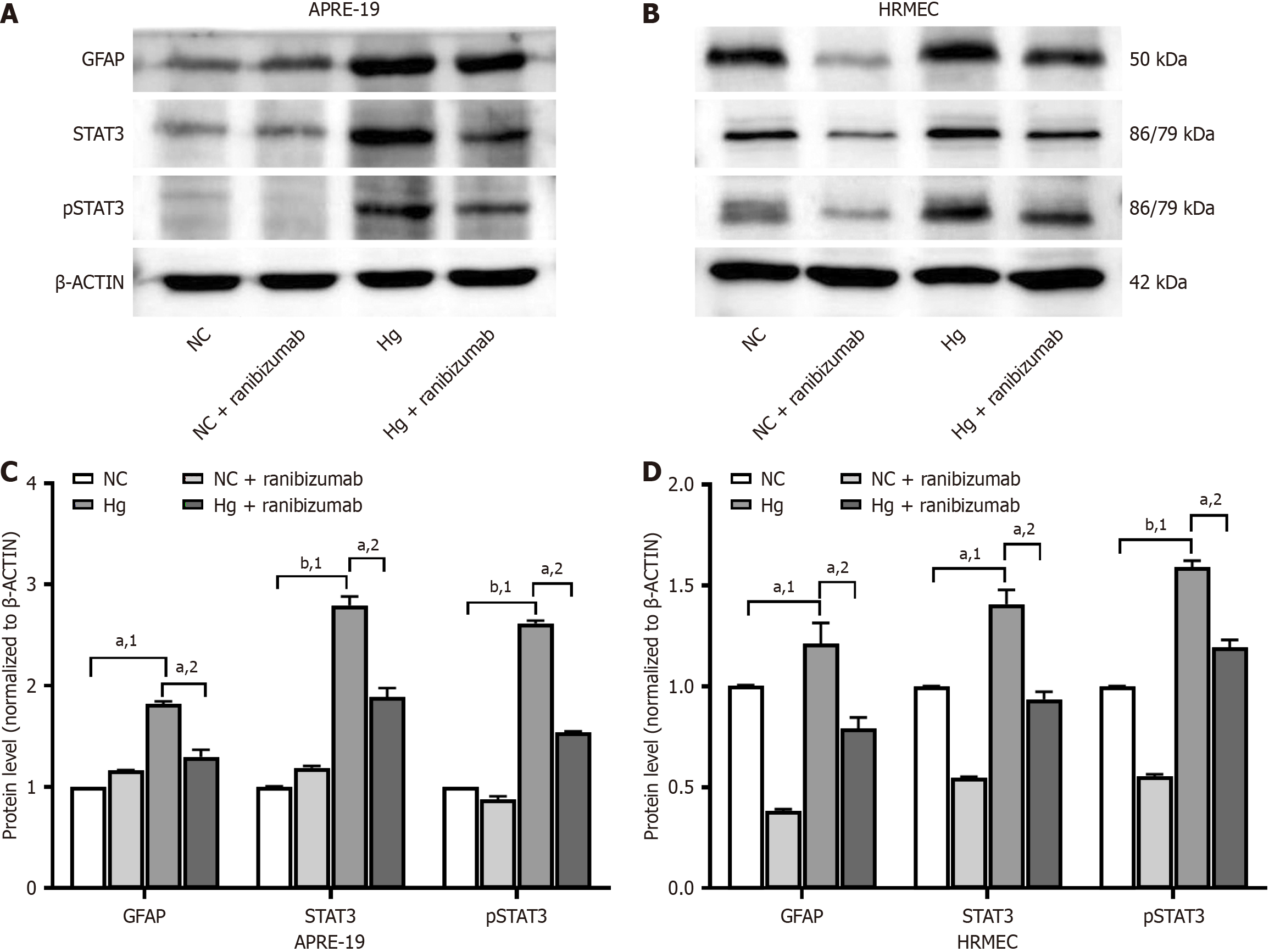Copyright
©The Author(s) 2025.
World J Diabetes. May 15, 2025; 16(5): 99473
Published online May 15, 2025. doi: 10.4239/wjd.v16.i5.99473
Published online May 15, 2025. doi: 10.4239/wjd.v16.i5.99473
Figure 3 Expression of glial fibrillary acidic protein, signal transducer and activator of transcription 3 (STAT3), and phosphorylated STAT3 proteins in adult retinal pigment epithelial 19 cells and human retinal microvascular endothelial cells.
Untreated (NC) (5.5 mmol/L glucose), NC + ranibizumab (5.5 mmol/L glucose + 0.125 mg/mL ranibizumab), high glucose (Hg) (25 mmol/L glucose), and Hg + ranibizumab (25 mmol/L glucose + 0.125 mg/mL ranibizumab). A: Expression of glial fibrillary acidic protein (GFAP), signal transducer and activator of transcription 3 (STAT3), and phosphorylated STAT3 (pSTAT3) proteins in adult retinal pigment epithelial 19 (ARPE-19) cells were detected by Western blot analysis; B: Expression of GFAP, STAT3, and pSTAT3 proteins in human retinal microvascular endothelial cells (HRMECs) were detected by Western blot analysis; C: Ratios of GFAP, STAT3, and pSTAT3 protein expression levels in different groups of ARPE-19 cells; D: Ratios of GFAP, STAT3, and pSTAT3 protein expression levels in different groups of HRMECs. All results are expressed as the mean ± SD. aP < 0.05. bP < 0.01. 1P vs NC group. 2P vs Hg group.
- Citation: Lin YT, Tan J, Tao YL, Hu WW, Wang YC, Huang J, Zhou Q, Xiao A. Effect of ranibizumab on diabetic retinopathy via the vascular endothelial growth factor/STAT3/glial fibrillary acidic protein pathway. World J Diabetes 2025; 16(5): 99473
- URL: https://www.wjgnet.com/1948-9358/full/v16/i5/99473.htm
- DOI: https://dx.doi.org/10.4239/wjd.v16.i5.99473









